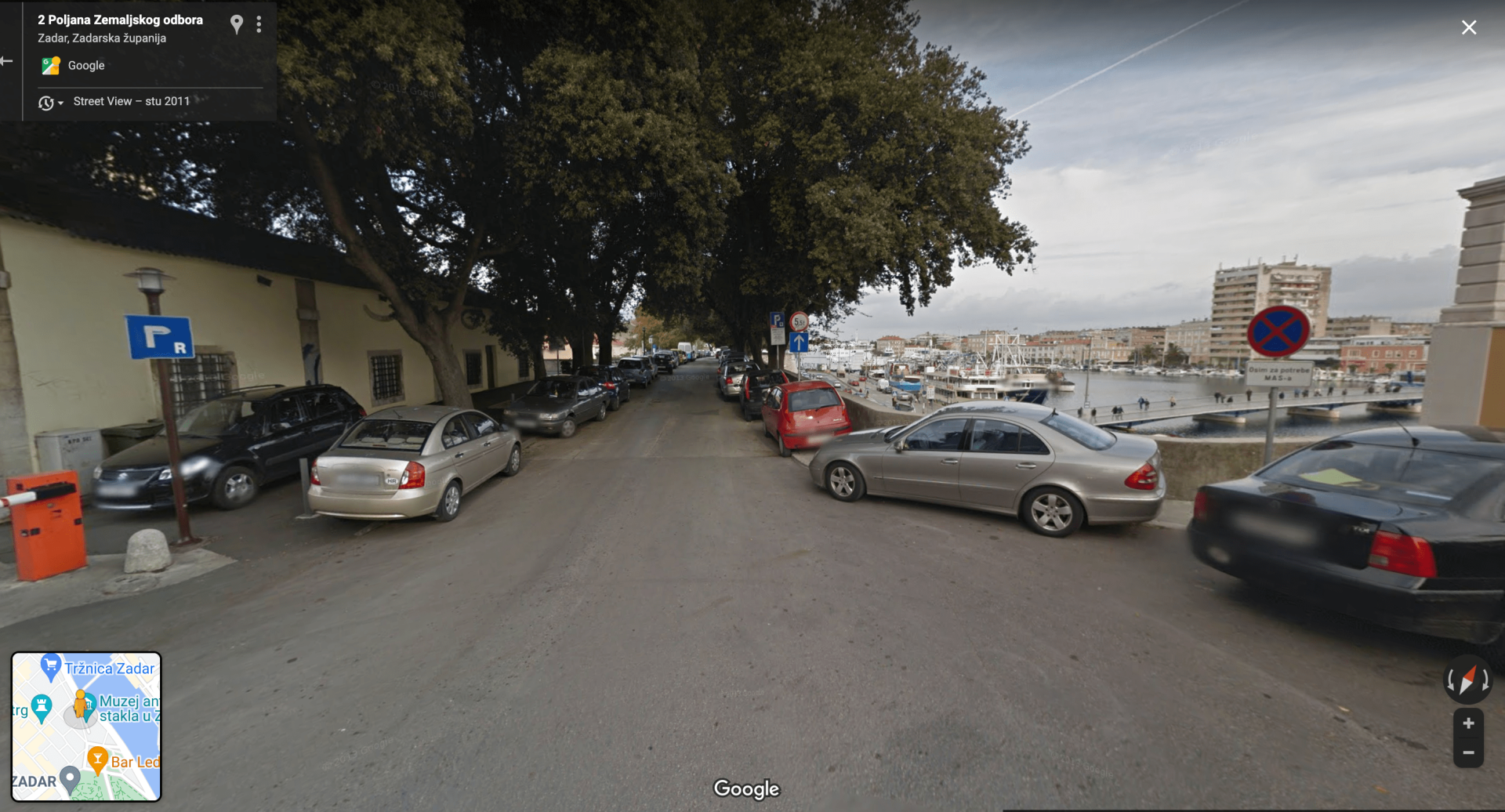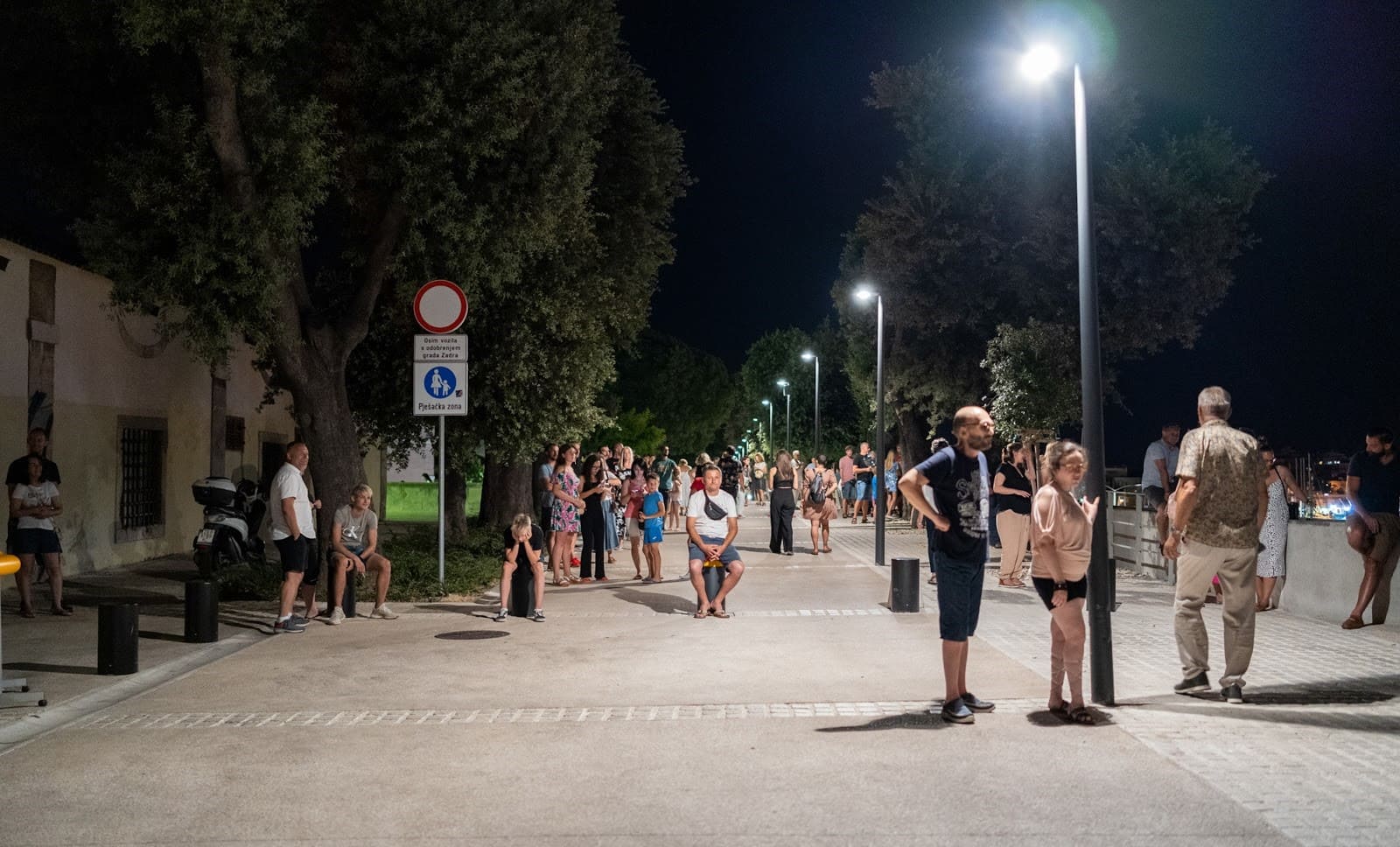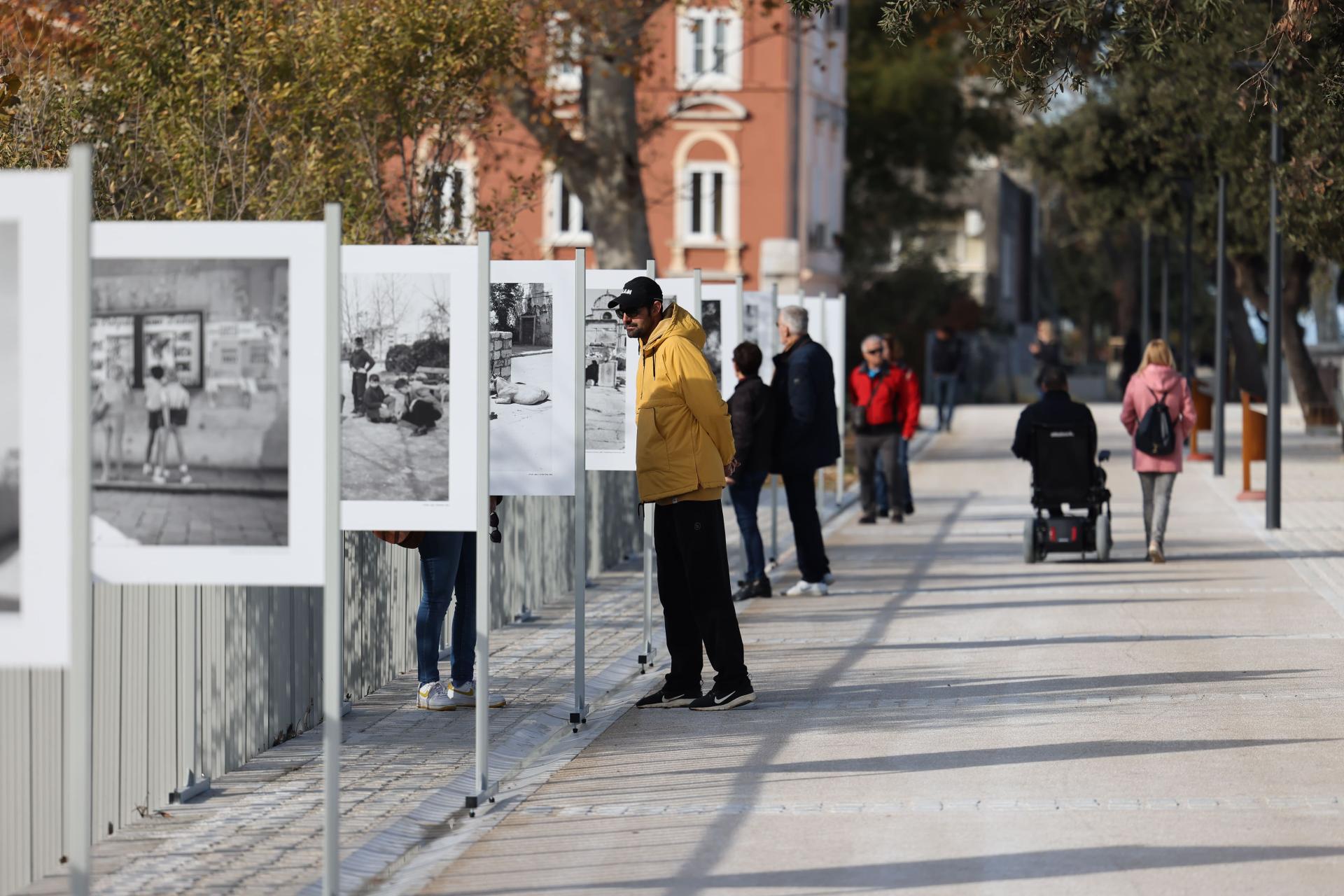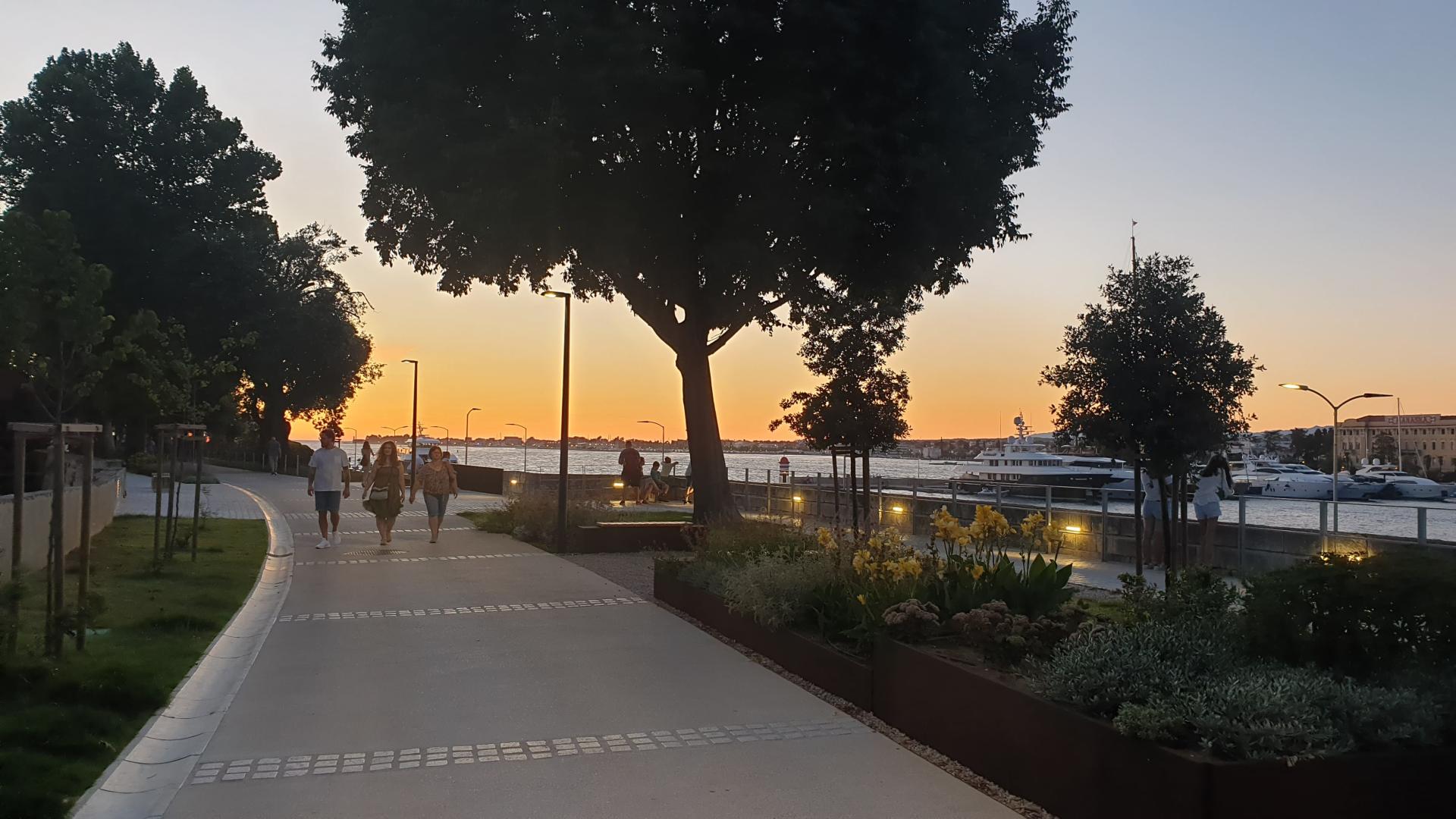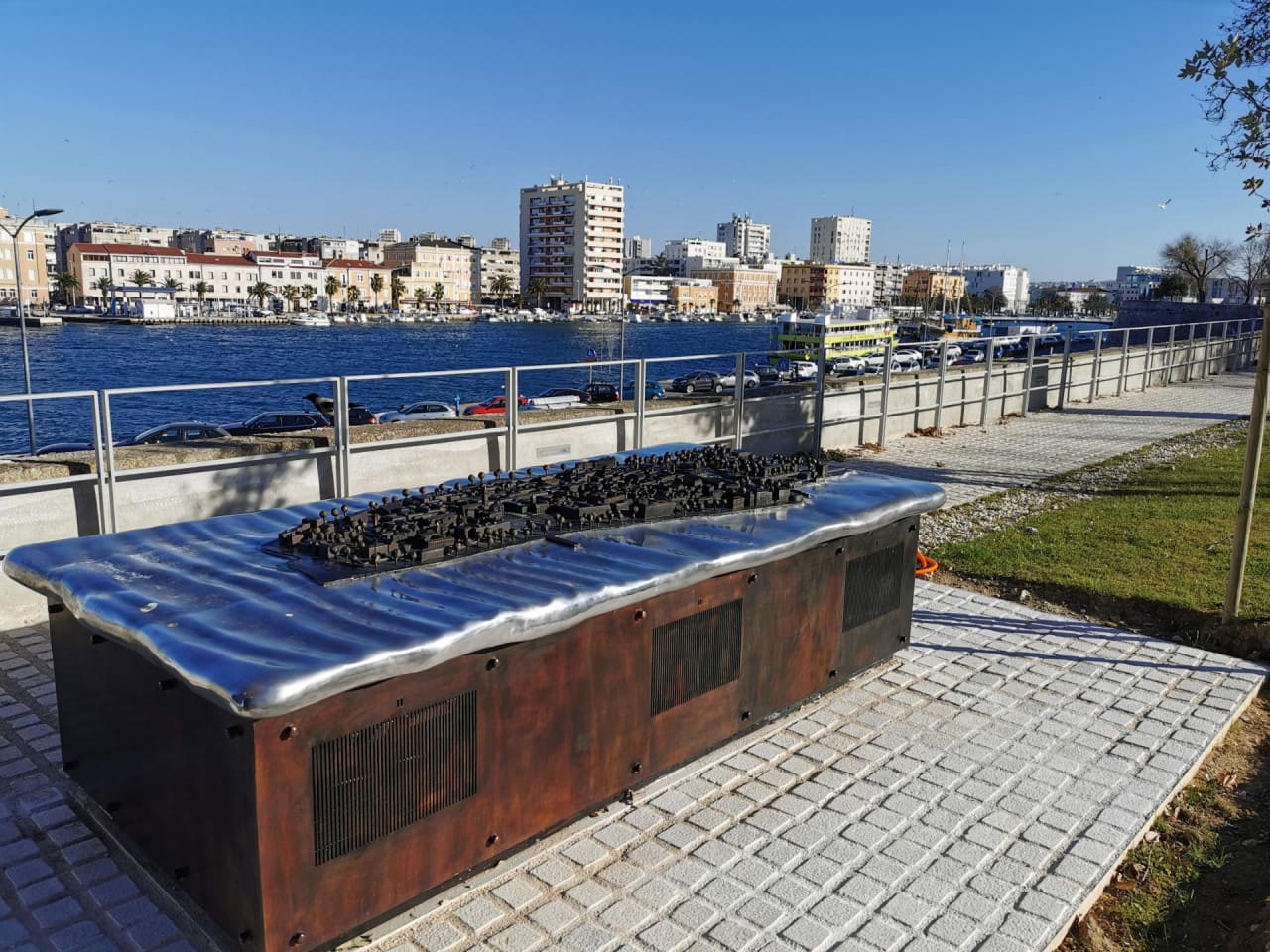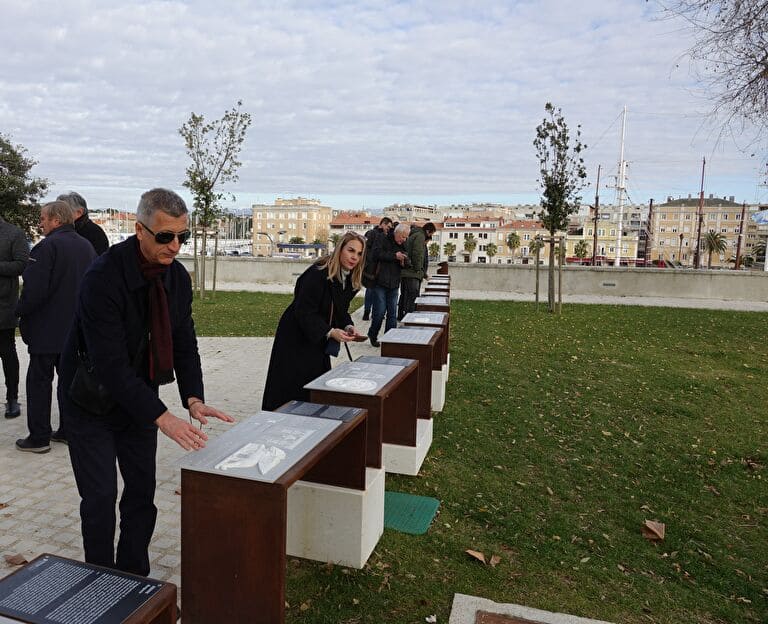Ramparts of Zadar rebellions
Basic information
Project Title
Full project title
Category
Project Description
Project was about converting a former road and parking lots set on the city walls into an urban space filled with greenery and available to wider public. With the help from EU, the 785 meters long promenade now serves as a historical, educational, cultural, inclusive space. The greatest success so far, however, is the positive attitude that the community developed towards the newly created urban space, all of which celebrates the new status of UNESCO protected cultural heritage gained in 2017.
Geographical Scope
Project Region
Urban or rural issues
Physical or other transformations
EU Programme or fund
Which funds
Description of the project
Summary
Project "Revitalization of Ramparts of Zadar rebellions" transformed 785 m of road with over 150 parking spaces situated in old historical city core into the most beautiful and calming urban park. The ramparts are national cultural heritage under UNESCO protection since 2017 as a part of "Venetian Works of Defence Between 16th and 17th centuries: Stato da Terra – Western Stato da Mar” cultural heritage. The projects implementation, however, was crucial on more than one level. Educational, social, cultural, digital and environmental, to be precise. Workshops for experts and students, free entrance, information panels equipped with Braille, photo exhibitions, WiFi spots, transformation from a mistreated place to an urban green place, reduction of CO2 emissions and traffic noise for the city inhabitants, and much more all contributed to its implementation and sustainability. To put it simply, the project's purpose was to give this extremely valuable cultural heritage a new meaning, redefine it and return it better and improved to community itself.
Key objectives for sustainability
Project's aim was to revitalize, regenerate and refurbish this highly valuable but inadequately used limited resource – public space. If we add to this the additional factor of Ramparts being under UNESCO protection, this projects implementation was crucial on more than one level. Firstly, it contributes a global challenge of climate change through transitioning to a climate-neutral economy on the EU level all by acting in a local context of removing over 150 parking spaces and a road in the old city core. In relation to that, the project implemented different measures to remove traffic from the city core that has been detected as a main problem because of the long search for parking spaces. Moreover, materials used were the ones that mimic and complement nature in its true form such as wood and stone, all the natural yet long-lasting materials securing durability and easiness of maintenance (corten steel), especially knowing that they come from the local chain supply. What is more, its “botanic” garden consists mainly out of Mediterranean plants with over 50 species and more than 5 000 seedling plants, common to this area and adapted to our climate, ensuring their long life growth and a local biodiversity. Securing more green area results in having more absorption during raining periods and more planted trees minimizes effects of heatwaves during summer season common in Zadar. On the other hand, even though this project brings daily benefits to local community, it has also stepped into new methods to manage mass tourism and minimize its effects on the city itself. This site is a first step to tackling responsible, sustainable and accessible tourism by dispersing tourist flows in the old city core, creating new tourist attraction by being one of the few old city walls in EU with urban park situated on them.
Key objectives for aesthetics and quality
When it comes to aesthetics, the promenade design imitates the nature and triggers majority of senses: visual, auditory, tactile and olfactory. Visual - green and brown installations intertwined with mixed colored flower islands produce admirable background for myriad of new cultural activities. Steel and wood benches placed on the promenade are one of a kind, designed specifically for this project which at the same time represent the architect's own design signature and pay homage to UNESCO protected cultural heritage. The light stimuli on the city bronze and aluminum model present the reflection of leaves and overflow of colors used by motion sensors at night and what is more, such model recorded a moment in history for new generations to come (intergenerational). Auditory - a sound component incorporated into the city model which imitates local sounds (sea waves, seagulls, church bells, city chit-chat etc.). Tactile - educational trail with information panels tells a story about the Rampards' history, unobtrusively, to all its visitors. Signage developed specially for this location is unified throughout the whole promenade and its entrances making them an integral part of the whole design7 story. Olfactory - since the promenade is filled with over 50 species of Mediterranean plants and more than 5 000 seedling plants, it triggers smelling senses, the ones which is growing relevance in park tourism since the impressions that arise through sensory perception in general remain stored in visitors' memories, and can often remind them of such experiences for a long time to come.
Key objectives for inclusion
Situated in the city centre, the ramparts represent one of Zadar’s most recognizable landmarks. Despite losing the parking lots and traffic per se, citizens embraced the newly transformed promenade, using it in their everyday life – as a meeting point, a recreational site, for events and myriad of other activities. It has become a platform for learning, presenting and participation. Even though being a open space, it serves as a cultural scene too, especially for exhibitions, concerts, dance and theatrical performances. During the “Zagrli Zadar” (en. "Embrace Zadar") campaign, one of the theatre performers stated “Theater actually originated on the street. People’s theater is the best. It gathers people, it gathers children.” What is more, not only does it act as an open stage of culture that gathers older and younger population, but it also has all the prerequisites for people with disabilities. In other words, this promenade has become fully accessible to people with wheelchairs (a promenade without obstacles) as well as people with hearing and visual impairments. Namely, besides the accessible entrances, the educational installations such as information tables and model of the city, are equipped with the Braille and sound and light stimuli, making it possible to fully approach the panels in wheelchairs at the same time. What is more, the closest parking spaces in vicinity of the city walls have been reserved for people with disabilities. Thus the site is now completely intended for public use and fully affordable, meaning free of charge, for all citizens and open all day throughout the year.
Results in relation to category
In relation to category "Regaining a sense of belonging" the results and impacts achieved are as follows:
- 785m of public space renovated, refurbished and regenerated by creating an urban park in the protected historical old city core
- 1 road removed
- over 150 parking spaces removed
- 1 UNESCO site preserved and upgraded
- 1 location made accessible and safe for every visitor: no cars, pollution or obstacles
- 10 parking spaces secured for people with disabilities
- 1 inclusive educational trail set up
- 1 city model
- over 5 000 new plants and additional trees planted resulting in increased green areas and protected biodiversity in the city
The greatest achievement so far, however, is the overall change of behavior and positive perception that the local community developed towards the newly created public space, all of which celebrates the new status of UNESCO protected cultural heritage gained in 2017.
How Citizens benefit
Local community was involved in project implementation on several occasions. First of all, two different types of workshops that involved experts and students in the field of culture, tourism, architecture and urbanism were organized. Students were creating new cultural-touristic offers/products in groups whilst having mentors. Workshops for touristic guides, on the other hand, were focused on gaining theoretical knowledge as well as practical skills on the importance of storytelling and creating sustainable and inclusive tourism offers/products. During the practical workshops, touristic guides were sent around the city in their usual touristic route, but this time using ie. wheelchair, wearing glasses for the blind, etc. During this they were accompanied by a person in a wheelchair that during the route talked about all his everyday obstacles – inability to enter a museum, or to go to the upper floor due to the lack of elevator, to highly set exhibition pieces, too long length of a route, inaccessible route etc. The intention was to open their views and perception of the city when it comes to create cultural content, as well as to present and demonstrate our cultural identity and heritage to vulnerable groups. During the project design phase, architects took in consideration that the location of the planned city model should serve as a starting point of all tourist routes developed by local tour guides. Apart from the above mentioned, the International summer school of cultural tourism was also organized which had students participating from different universities in Croatia and EU, with world known experts (e.g. Jafar Jafari, Yoel Mansfeld). Moreover, a cooperation was done with association of the blind and visually impaired, association of photographers, high school students and others.
The greatest benefit that derived was developed consciousness of having such a calm, accessible and safe spot that targets our daily life.
Physical or other transformations
Innovative character
Project targeted innovative approach to cultural heritage protection that fully contributes to new digital and green transition goals set by the European Commission. Moreover, it is innovative in its ability to combine two projects from different co-financing sources and aims: a complete revitalization of a cultural good on the one hand, and an improvement of the accessibility of this, both natural and cultural, site by implementing and promoting new tourist services that encourage social inclusion of people with disabilities on the other hand, hence contributing to social cohesion at the highest possible level when talking about an open space. Consequently, one of a kind sculpture of the model of the city centre (protected cultural heritage area), combines traditional elements (bronze) with new technologies (speakers and multicolor base lighting). In other words, while majority of other city models possess only visual and tangible aspects, the one placed combines appearance of the city, sounds of the city and lights of the city, the last two by using motion sensors. Whenever people get closer to the model, the audio and light sensors turn on showing colors that resemble the world-famous installation “Greeting to the Sun” as well as sounds produced by the equally known installation “Sea organs”. Inclusive cultural path designed to tell a story about the site’s history, was designed for children (possibility of standing on part of the installation), people with disabilities (sight disability) as well as to fit the wheelchair under the designed plates with written stories. Finally, the promenade is now a combined exhibition space which already hosted different cultural events, one of which covered hidden heritage i.e. archaeological findings underneath the ground floor of the walls.
Learning transferred to other parties
Hearing about the Green City Movement and a number of European cities transforming their traffic areas (removing roads and substituting cars) into public green areas nowadays, only makes Zadar proud since such transformation in this city began in 2017 with the Living Streets project and continued with the Revitalization of Ramparts of Zadar rebellions in the same year. Abovementioned results, and more importantly adjustment to local context and values, is what makes this project both unique and easily transferable to other interested parties, especially rich in cultural and other heritage. In other words, this is a perfect example of the green and digital transformation to which EU’s future is directed and contributes in few points: increasing quality of life in Europe, contributing to goals set by European Green Deal, ensuring digital transformation through implemented infrastructure; strengthening networking and partnerships within European union. And all of this set on the foundations of our cultural heritage. This type of intervention that connects few projects to rethink the same local challenge from different perspectives and tells a story set on local values and history, which combines elements of nature and biodiversity, tolerance and inclusion, design and infrastructure can nowadays be easily transferable, replicable and adjusted to local context.

